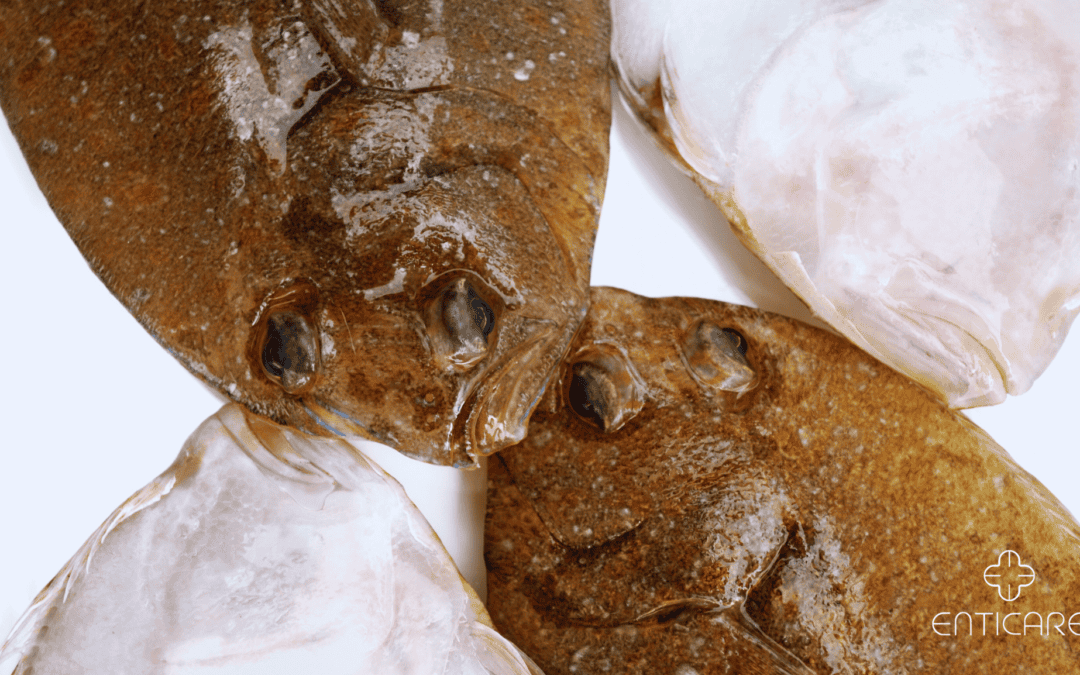Flounder, a type of flat fish, might not be as popular as salmon or tuna, but for those with a flounder fish allergy, this seemingly innocuous seafood can pose significant health risks. Fish allergy is one of the most common food allergies in the U.S., affecting about 1% of the population and potentially causing severe reactions. This article delves into understanding flounder fish allergy, identifying symptoms, avoiding flounder, and managing your health effectively. With practical tips and resources, you’ll learn how to handle this allergy with confidence.
What Is a Flounder Fish Allergy?
Definition and Causes
A flounder fish allergy occurs when the immune system overreacts to proteins in flounder, a type of finned fish commonly found in both the Atlantic and Pacific Oceans. The immune system mistakenly identifies these proteins as harmful, triggering an allergic response. This type of allergy falls under the broader category of fish allergies, which can include a range of species, but each fish allergy can be specific to certain types.
Common Fish Allergy and Cross-Reactivity
People with a flounder allergy may also react to other flatfish like sole or halibut due to cross-reactivity. This means that the proteins in flounder are similar to those in other fish, making it challenging to avoid all potential allergens. Understanding cross-reactivity is crucial for effective management of fish allergies. Shellfish allergies, however, are different from fish allergies, and cross-reactivity typically does not occur between them.
Diagnosis
Allergists use specific tests to diagnose a flounder fish allergy. Common methods include the skin prick test, where the skin is gently pricked with a small amount of allergens, specifically tree nuts, and the subsequent monitoring for any adverse reactions, and blood tests that measure IgE antibodies to fish proteins. Consulting with an allergist will ensure accurate diagnosis and appropriate management strategies.
Recognizing Fish Allergy Symptoms of a Flounder Fish Allergy
Immediate Reactions
Immediate reactions, which are part of the broader range of fish allergy symptoms, typically occur within minutes of consuming flounder or coming into contact with it. Symptoms can include:
- Skin Issues: Hives, itching, or swelling.
- Digestive Problems: Nausea, vomiting, or diarrhea.
- Respiratory Symptoms: Wheezing, coughing, or difficulty breathing.
Delayed Reactions
Delayed reactions might not appear until hours or even days after exposure. These can include:
- Chronic Digestive Discomfort: Ongoing nausea or abdominal pain.
- Skin Conditions: Persistent eczema or dermatitis.
- Respiratory Issues: Long-term coughing or nasal congestion.
Anaphylaxis
In severe cases, flounder allergy can lead to anaphylaxis, one of the most severe allergic reactions, which is a life-threatening condition that requires immediate medical attention. Symptoms include difficulty breathing, swelling of the throat, and a rapid drop in blood pressure. Understanding these symptoms and carrying an epinephrine auto-injector is essential for safety.
Avoiding Flounder and Managing Your Diet
Identifying Flounder in Foods and Food Labels
Flounder can appear in various dishes and processed foods. Look for it in:
- Restaurant Dishes: Ask about the type of fish used in prepared dishes.
- Packaged Foods: Check ingredient labels for flounder or related terms like “flatfish.”
- Pre-prepared Meals: Verify ingredients before consumption.
Reading food labels is crucial to identify potential fish ingredients, as fish may be listed under other names or be present in unexpected items.
Substitutes and Alternatives
Use alternative fish or plant-based options if you need to avoid flounder. Safe alternatives include:
- Other Seafood: If you’re not allergic to all fish, species like cod or haddock might be safe.
- Plant-Based Options: Consider options like tofu or tempeh.
- Consult with a Nutritionist: A dietitian can help you find suitable substitutes and ensure you maintain a balanced diet.
Artificial fish can also provoke allergic reactions and should be avoided by those with fish allergies.
Food Preparation and Safety
Avoid cross-contamination by using separate utensils and cooking equipment for allergen-free meals. Clean surfaces thoroughly to remove any traces of flounder. This practice helps prevent accidental exposure to allergens.
Navigating Social Situations and Eating Out
Informing Others About Your Allergy
When dining out or attending social events, communicate your flounder allergy clearly. Inform hosts, servers, and anyone preparing food about your specific needs. Providing detailed information helps reduce the risk of accidental exposure. It is also crucial to avoid seafood restaurants due to the high risk of fish allergy reactions and cross-contamination with fish products.
Finding Safe Dining Options
Research restaurants that offer allergen information and can accommodate your dietary restrictions. Look for establishments with allergen-free menus or those that are knowledgeable about managing food allergies. Allergy Eats provides a resource for finding allergy-friendly restaurants.
Additionally, avoid locations such as seafood restaurants and fish markets to reduce the risk of exposure to allergy-causing fish.
Managing Food Allergies While Traveling
Traveling with a flounder allergy requires careful planning. Carry safe snacks, research local dining options, and ensure you have access to medical assistance if needed. Airlines and hotels may have policies for managing food allergies, so inquire in advance.
Conclusion: Take Charge of Your Flounder Fish Allergy
Managing a flounder fish allergy involves understanding the condition, identifying sources of flounder, and taking proactive measures to avoid exposure. By staying informed and prepared, you can navigate daily life and social situations with confidence.
If you need personalized advice or assistance in managing your allergy, consider scheduling an appointment with a healthcare professional. Click here to book your consultation and take control of your health today. Your safety and well-being are worth every effort.

